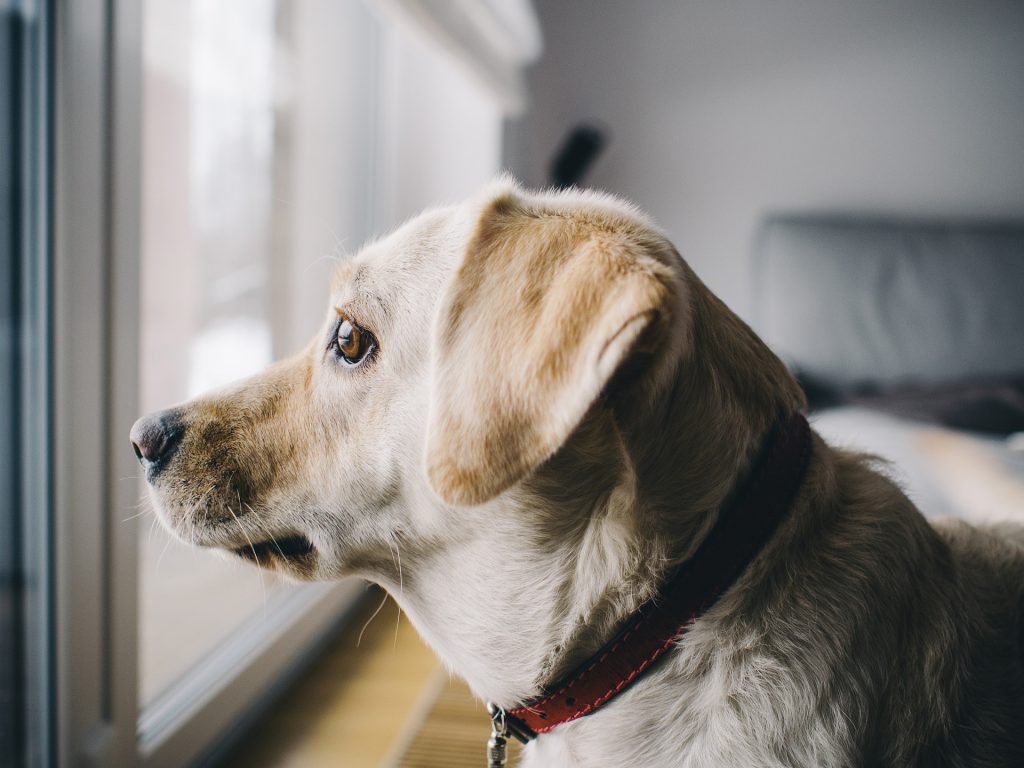
10 Smart Solutions for Leaving Dog Home While at Work (Apartment Edition)
Leaving your dog home while at work can feel like a balancing act—especially if you live in an apartment. Tight spaces, shared walls, limited outdoor access, and long workdays can lead to barking, boredom, accidents, and even separation anxiety. If you're a busy pet parent trying to juggle your career and your dog’s well-being, you're not alone.
Fortunately, there are practical and compassionate strategies that can make apartment life more comfortable for both you and your dog. From enrichment tips to scheduling tricks to setting up the perfect alone-time routine, this guide will walk you through 10 smart, real-world solutions that work—even when your days are packed.
1. Start With a Calm, Predictable Morning Routine
Dogs thrive on structure, and one of the best ways to set them up for a peaceful day alone is by starting the morning off on a calm, predictable note. A rushed or chaotic exit can leave your dog feeling anxious or overstimulated—which can quickly spiral into barking, chewing, or pacing once you're gone.
Wake up a little earlier to give your dog time to sniff, move, and go potty without feeling rushed. Add in a short game, 10 minutes of indoor enrichment, or some quiet bonding time before leaving. This not only builds trust—it sets the tone for the rest of their day.
For dogs new to apartment life, routines are even more important. The AKC's guide to adjusting to small space living offers useful tips on preparing your pup for fewer distractions and more indoor calm time.
2. Create a Safe, Enriching “Home Alone” Zone
One of the best things you can do when leaving your dog home while at work is to create a specific space that feels safe, cozy, and stimulating. This could be a crate, a playpen, or a gated area of your apartment—anywhere that allows your dog to relax and stay engaged without being overwhelmed by access to the entire space.
Include soft bedding, familiar toys, and a few puzzle feeders to encourage calm, independent play. Avoid hard floors and cold corners—comfort goes a long way toward reducing stress. You can rotate different soft toys throughout the week to keep your dog from getting bored while you’re gone.
For dogs who thrive with a cozy space, structured downtime in a crate can also be beneficial—especially when it’s introduced positively. Check out these apartment-friendly crate training tips to help your dog associate alone time with safety, not punishment.
3. Use Calming Scents, Music, or White Noise
Leaving your dog home while at work often means they’ll be exposed to hallway noises, doors slamming, distant barking, and other apartment distractions. These unpredictable sounds can trigger anxiety, especially in dogs prone to reactivity or separation stress.
One easy way to create a peaceful soundscape is to play white noise, gentle music, or dog-specific playlists designed to soothe. Classical music has been shown to reduce barking in shelter dogs, while ambient tracks can block out disruptive outside sounds. Consider using a small speaker or noise machine near your dog’s rest area for consistency.
You can also try pet-safe calming pheromone diffusers, such as Adaptil, or lightly diffuse lavender (only if safe for your dog and used away from cats). The Fear Free sound sensitivity guide has great insights on how sound control affects stress levels for pets in noisy homes.
4. Schedule Enrichment Before and After Work
Boredom is one of the top causes of barking, chewing, and destructive behavior in apartment dogs left alone during the workday. To keep your pup mentally balanced and physically calm, build in short enrichment sessions before you leave and after you get home.
Before work, try a food puzzle, snuffle mat, or 10-minute play session with a tug toy. In the evening, swap in decompression walks, hide-and-seek games, or interactive indoor toys. These activities help burn off energy while strengthening your bond—without requiring a full hour at the park.
For ideas that fit into your schedule, explore these indoor dog enrichment games designed specifically for busy apartment owners. They work great for cats too—especially with toys that mimic prey or puzzle feeders that encourage foraging.
5. Make Alone Time Normal (Not a Big Deal)
Many dogs become anxious when they sense you’re about to leave—especially if your departures are full of fuss, emotion, or sudden changes. To reduce separation-related behaviors, normalize alone time by treating it as no big deal. Keep exits calm, brief, and consistent. Avoid dramatic goodbyes or repeated “be good!” reassurances.
Practice short separations while you’re home: leave the room, close the door, and return without fanfare. These mini-exposures help desensitize your dog to comings and goings. For dogs already showing signs of distress when left alone, the ASPCA separation anxiety guide outlines structured steps to rebuild their confidence.
Over time, your dog learns that you leaving isn’t scary or confusing—it’s just part of the day. And when that happens, the whining, barking, and pacing begin to fade.
6. Try a Pet Camera With Two-Way Audio
If you're worried about leaving your dog home while at work—especially in an apartment where barking or anxiety could disturb others—a smart pet camera can be an excellent investment. These devices let you check in remotely, speak to your pet, and even dispense treats from your phone.
While not a replacement for in-person engagement, pet cameras offer peace of mind. You can monitor barking patterns, see if your pet is pacing or resting, and offer a reassuring word when needed. Some cameras even send noise or motion alerts if something seems off.
Just be sure not to overuse the speaker feature. If your dog gets confused or excited by hearing your voice but not seeing you, it may backfire. Use it sparingly—ideally as part of a calm routine. Combined with the strategies above, it becomes one more tool to help your dog feel safe and connected, even while you’re away.
7. Stick to a Consistent Potty Routine
Nothing adds stress to your day like worrying about accidents while you're gone. Dogs—especially puppies or seniors—need a reliable potty routine that fits your work schedule. Before you leave in the morning, make sure your dog has a chance to relieve themselves fully. After work, take them out promptly to avoid discomfort or messes.
If you have long shifts, consider a trusted dog walker or neighbor visit midday. Alternatively, for smaller breeds or older dogs, indoor potty options like grass pads or litter trays can work well in tight apartments. Just ensure you use a consistent location and clean it thoroughly to avoid confusion or odors.
For detailed tips on housebreaking success in small spaces, don’t miss our full guide on potty training apartment dogs. It covers crate timing, signaling routines, and managing bathroom breaks with minimal space.
8. Rotate Toys and Enrichment Items
Pets, like people, get bored with the same environment every day. Leaving a dog home while at work becomes more manageable when their surroundings stay mentally stimulating—and that starts with toy rotation. Instead of giving your dog access to every toy at once, offer a few select items and swap them out every few days.
This approach keeps even familiar toys feeling novel and helps prevent boredom-based chewing or whining. Try mixing different textures and functions: a soft plush, a treat-dispensing puzzle, a durable chew, and a scent-based item like a snuffle mat. Leave a surprise or two before you head out the door—your dog will look forward to discovering them.
You can also DIY some of your enrichment tools using safe, pet-approved materials. Check out this list of DIY enrichment toys from Burlington Vet Center to create your own boredom busters on a budget.
9. Recruit Help (Walkers, Friends, or Neighbors)
Even with the best routines, leaving a dog home while at work for 8+ hours every day can be tough—especially in apartments without yards or easy access to outdoor space. That’s where your community comes in. Don’t hesitate to ask for help from trusted dog walkers, pet-sitting services, or friendly neighbors who are home during the day.
A midday walk or short check-in can break up your dog’s day, offer a potty break, and reduce anxiety. Many local walkers offer flexible 15–30 minute visits, and some pet-sitting apps let you book trusted professionals with background checks. If your building has a pet-friendly vibe, sometimes all it takes is asking another dog parent if they’d be open to a trade-off.
Don’t forget to build relationships with your neighbors. Letting them know you’re working on your dog’s routine can go a long way toward patience if barking does occur—and creates allies instead of complaints.
10. Watch for Stress Signals and Adjust Accordingly
Even with thoughtful routines, some dogs may still struggle with being home alone—especially in tight apartment settings with limited stimulation. Instead of assuming your setup is “good enough,” observe how your dog actually behaves during and after your workday.
Does your dog bark excessively when you return? Are there accidents, chewed items, or signs of distress? Pet cameras can help track mid-day behavior, while neighbors might share helpful feedback about barking or pacing. These signs don’t mean failure—they mean it’s time to tweak your strategy.
If the stress continues despite enrichment and structure, talk to your vet or a professional trainer. Chronic separation anxiety can affect your dog’s long-term health. The VCA preventive health guidelines and the ASPCA’s separation anxiety guide offer excellent starting points.
Final Thoughts
Leaving your dog home while at work doesn’t have to mean guilt, anxiety, or a wrecked apartment. With smart routines, supportive tools, and a little creativity, you can create an environment that keeps your dog (or cat!) feeling safe, enriched, and emotionally balanced—even during long hours alone.
Remember, every pet is different. What works for one may not work for another—and that’s okay. The key is staying observant, being consistent, and adjusting your approach with compassion and flexibility. Over time, your pet will not only adjust—they’ll thrive.
For more tips on building a peaceful, pet-friendly apartment life, check out these helpful reads:
• Stop Your Dog From Barking When You’re Not Home
• Crate Training Tips for Apartment Dogs
• Indoor Games to Keep Your Dog Happy
• Pet Safety Tips for Apartment Living
Frequently Asked Questions
How long can I safely leave my dog alone in an apartment?
Most adult dogs can handle 6–8 hours alone with proper enrichment, potty routines, and training. Puppies and seniors need more frequent breaks and support, especially in apartment settings with limited yard access.
How do I prevent barking while I’m at work?
Establish a calm routine, use sound masking like white noise, and rotate enrichment items. Practice calm departures and use positive crate or safe zone conditioning to reduce anxiety-driven noise.
Is it okay to crate my dog during the workday?
Yes, if used correctly. Crates should feel safe—not punishing. Ensure your dog has enough room, access to water, and gets breaks before and after work. Consider crate alternatives like playpens if needed.
What are signs my dog isn’t coping well alone?
Excessive barking, destructive chewing, pacing, accidents, or signs of depression may indicate separation distress. Use cameras or feedback from neighbors to assess what’s happening while you’re gone.
Can these tips help with cats too?
Yes—especially toy rotation, sound masking, and calming routines. Many cats enjoy puzzle feeders, window views, and scent-based play when left alone. Cats may not show stress the same way, but they benefit from thoughtful routines just as much.

Join the Busy Pet Parent Newsletter!
Get easy routines, time-saving tips, and the latest gear reviews—delivered straight to your inbox.
Perfect for busy pet owners, apartment dwellers, and anyone who wants a happy, healthy companion (without the stress).
Exclusive guides & checklists
Product recommendations & deals
No spam—unsubscribe anytime!




